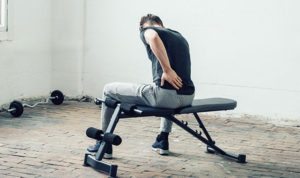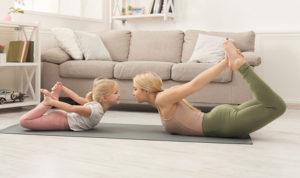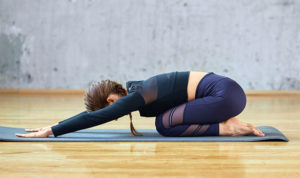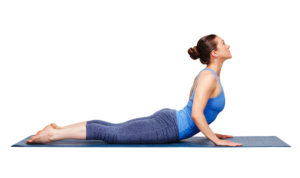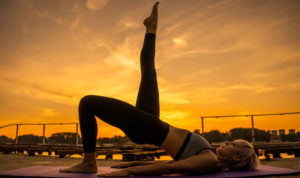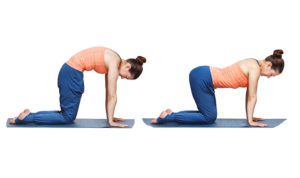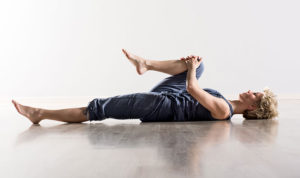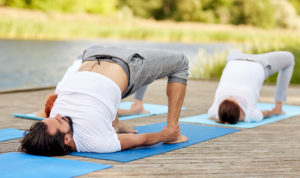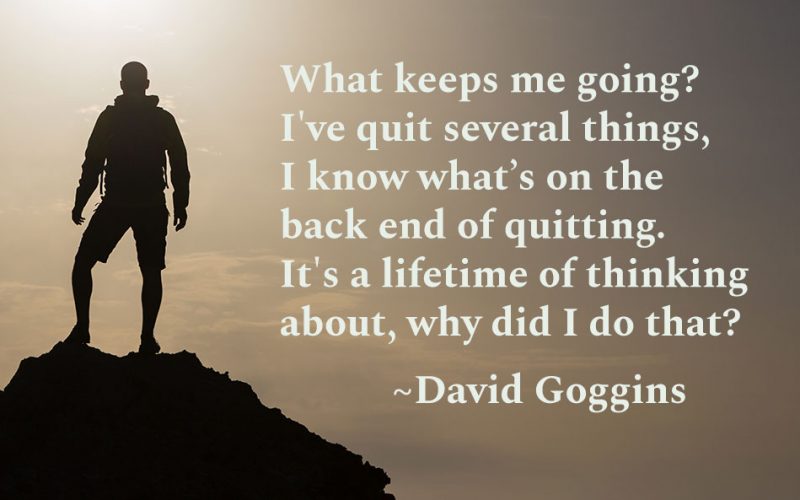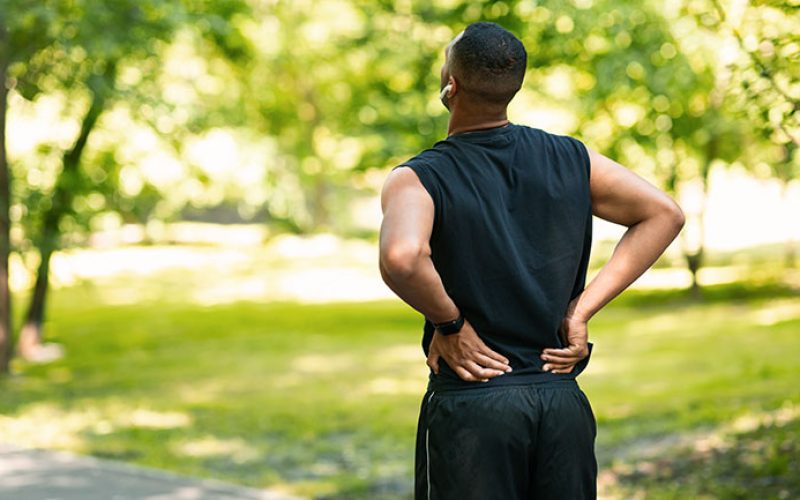Why does stretching for lower back pain work?
Do I really need to subscribe to yet another thing to do every day? The short answer is yes, but more importantly, it’s not difficult!
Stretching your back serves two purposes; if you’re currently dealing with pain, it will typically relieve some of your discomforts. Secondly, incorporating stretching into your daily routine will also strengthen your upper and lower back, causing you to be less likely to suffer a new injury or chronic pain in the future. Sounds like a win-win right?
Before we learn about the exercises to reduce back pain, we should understand a little more about the human spine and the typical reasons for back pain.
Why does my back hurt?
We’re pretty lucky to live in the world we do today. We’ve never had it so easy, the unfortunate side effect of having a lazy sedentary lifestyle is the havoc it causes to our spines, causing the infamous low back pain so many of us suffer with.
Our backs have taken two major hits over the last several millennia, first, we had the bright idea of agriculture, humans went from hunting and gathering to farming. The sudden bending over all day to plant food, clear stones, and dig drainage routes was not what our bodies were designed for.
While the agricultural revolution was brought on by necessity for hard work, the second equally damaging, possibly worse evolution is our new habit of doing as little work as possible, and with the addition of cell phones, it only gets worse. More on cell phones a little later.
The human body relies on the spinal column for stability and mobility. The spine provides us the support we need to bend, twist, or move around. The spinal column comprises 24 stacked vertebrae, placed one over another from your head to your hips. The spinal column is wrapped tightly by ligaments and muscles. Any injury in these ligaments or back muscles can result in mild to severe pain. Luckily, you can correct or reduce these kinds of back pains by primarily implementing proper habits and also, a few simple regular stretches and exercises to build up extra support for your spine and core.
Backache typically is a result of a spasm of the back muscles that maintain our spine. Spasms occur due to improper posture, sudden jerky movements, or repetitive motions. There are, of course, medical issues that cause back pain, blunt trauma, obesity, osteoporosis, osteoarthritis, gynecological problems, bladder, or kidney infections, and even tumors, but even these will benefit greatly from a few simple tweaks to your posture and daily routines.
Side note, back pain exercise, and stretching may not be sufficient in some instances where the pain is medically related, not related to improper posture, or is accompanied by bowel or bladder control issues.
A study performed at the University of North Carolina found that more than an overwhelming 80 percent of people will experience an episode of back pain at some point in their life. (h-wave.com)
Preventing back pain
The most effective, and simple method to avoid lower back pain is simply to maintain good posture as much as possible. Being mindful of your lower back and keeping your spine straight during basic movements, activities, and most importantly while sitting is key.
A couple of basic rules are to never bend at the waist with a rounded back or slump to pick up anything, and always keep your head and shoulders as upright as possible. Instead of bending over to pick things up, make a habit of squatting down with your head and shoulders over your hips. Use your inner thighs, hips, and the good old gluteus maximus to grab Timmy’s toys from the floor, … again.
Instead of slouching while you sit or stand, always maintain an upright position with your head and shoulders over your hips. Seems simple enough right? If you pay attention to your posture, you will be surprised how much you slouch without even realising it.
When you do sit, having a comfortable chair that ads extra padding and support seems like a simple thing but it’s incredibly important, 30 years from now you will look back and thank yourself.
Staying in the same posture for too long is problematic as well if you’re starting to get uncomfortable, it’s best to get up and move around, or, even better, change your position in a way that also incorporates proper posture.
Even if you are not uncomfortable, constant movement is a good thing. If you are at work or relaxing at home, make it a point to constantly move your position every so often. You can incorporate a standing desk for part of your day, use a ball to sit on from time to time, or even kneel at your desk, which has the additional benefit of opening your hips and working your outer glutes and core.
This applies to sleep too; picking the proper soft mattress is key to back health.
Another sinister culprit in the fight against back pain is the cell phone. If you happen to be reading this on the phone right now, check your posture. Are the tops of your shoulders rolled over with your head down, if so it’s time for a modification?
Since not using your phone is not really an option, we need to learn how to use it in a way that causes the least harm. It’s really not that hard. Essentially there are two ways to go about this; either, raise the phone up to your face so that you are able to view the phone with your head up, (yes it looks a little weird), or my preferred method, bend forward at your hips, place your elbows on your knees, and maintain a straight spine while holding your phone. This tiny adjustment can save you tons of grief down the road.
Lower back pain is so common and so problematic that it’s the No. 1 reason for missed work days worldwide , according to the World Health Organization. (iowaclinic.com)
Yoga for back pain
For regular active back conditioning, it would be hard to find a better activity than Yoga for relieving aches and pains throughout your body, particularly your back. The easiest way to start stretching for back pain is to sign up for a local basic yoga class or start slow at home, all it takes really is a yoga mat and your set. There are endless yoga resources available for free!
Meditation for pain
Meditation as well can go a long way in helping to prevent and heal by getting your body and mind in sync and being able to check-in and recognize how your body is feeling, and provide you a more consistent pattern of communication with our bodies.
Recommended back stretches
As we’ve mentioned, the single best cure for any injury or pain is always prevention. However, adding regular stretching and exercises will go a long way to preventing future aches and injuries.
Childs Pose
This basic pose is best to release the muscles all throughout your back. Often this is preferably used at the beginning or end of any back routine not just yoga.
Using a yoga mat or soft surface, start on your knees with the top of your foot against the floor. Move your knees to the side at least hip-width apart or wider.
Breath mindfully and when you exhale and drop your hips back toward your heels. Place your forehead as close to the ground or yoga mat as possible. Try and let your stomach drop between your thighs.
With your palms down, reach your arms out in front of you, feeling the stretch through your entire back. You can alternate with your palms up to stretch your shoulders as well.
Cobra Pose
Lie face down with the tops of your feet flat on the floor and your legs hip-width apart.
Rest your head on a mat or the floor, and relax your upper back and shoulders. Place your hands face down near each side of your head and your forearms placed against the ground.
Inhale and focus on the muscles in your back as you press up to raise your head and chest off the floor.
Keep your focus straight ahead. When you are able to, press your hands against the floor and raise your torso further so that you are off of your forearms and on your hands.
Pelvic Tilt
On your yoga mat or soft surface, lie on your back and bring your feet up so they are flat on the floor with your knees at a 90-degree angle. Try to relax your spine keeping your core tight. Bring your hips up to the ceiling to a comfortable level. You can start slowly holding this for a few seconds, but try to work up to holding this pose for 10 seconds, about 15 times. As you advance, you can add in alternating raising one leg to the sky with your toes pointed, this adds extra strength to your core.
Cat-Cow
Start on your hands and knees with your hands under your shoulders and your knees directly below your hips. Position your knees and toes parallel to each other, hip-width apart. Create an L-shape with your forefingers and thumbs.
Inhale as you arch your back, pulling your chest forward and lifting your forehead and tailbone up.
Lengthen your chest and neck, preserving the length in your mid- and upper spine.
Breathe out as you round your spinal column, pulling your head toward your knees and hips. Press through your shoulders, elbows, and hands to lift your upper back towards the ceiling. Tuck your chin to your chest.
This is one rep. Continue to alternate gradually from Cat to Cow, breathing in as you move into the full extension of Cow, and breathing out as you move into the full flexion of Cat.
Lengthen each breath as much as possible.
Gently capture legs towards one another to keep your core engaged and safeguard the spinal column.
Knee to Chest
Lie on your back on the floor. Bend your knees to a 60-degree angle and keep your feet flat on the floor. This is the starting position.
Leave your left foot in place. Gently raise your right knee up enough so that you can grasp your knee with both hands. Interlace your fingers behind the knee.
Usage both hands, carefully pull your bent right knee towards your chest. Hold it as close to your chest as possible for 5 to 20 seconds.
Yoga pre wheel, or bridge
Start in a comfortable position on your back. Permit the back of your head and the backs of your shoulders to rest on the ground, and prevent moving your head from side to side as you enter this position to secure your neck.
Bend your knees and make sure that your feet are flat, separated, and parallel about hip-distance apart.
Inhale and push off of your feet to raise your hips off the ground and push comfortably towards the ceiling.
If you are able, reach for your ankles with your hands to stabilize the position.
Keep in mind the propensity for the knees to want to splay apart as the hips raised. Holding a yoga block between your knees can be a valuable tool to keep the thighs hip range apart and parallel here.
Continue to improve the present by moving your chest towards your chin (not chin to the chest!), extending your tailbone towards your feet, and possibly most notably, relaxing your face.
Hold the posture for several full deep breaths.
Discomfort from stretching
Some mild discomfort and pain can is typical anytime you start a new workout. As you work your way to better back health and your muscles strengthen, that pain and discomfort should disappear.
The key is that you should experience a little discomfort during the exercise; you should not feel pain from any exercise or stretch after you’ve stopped.
When a fitness routine causes moderate or severe pain symptoms that last longer than 15 minutes, you should end the exercise and check in with your doctor.
Summary
We’ve gone over a lot of the reasons why stretching for back pain is a great idea. We’ve also talked about prevention, and treatments when you find yourself struggling with pain. Did we miss anything? Do you have any suggestions you could give to help people avoid back pain? We’d love to hear about it in the comments!


